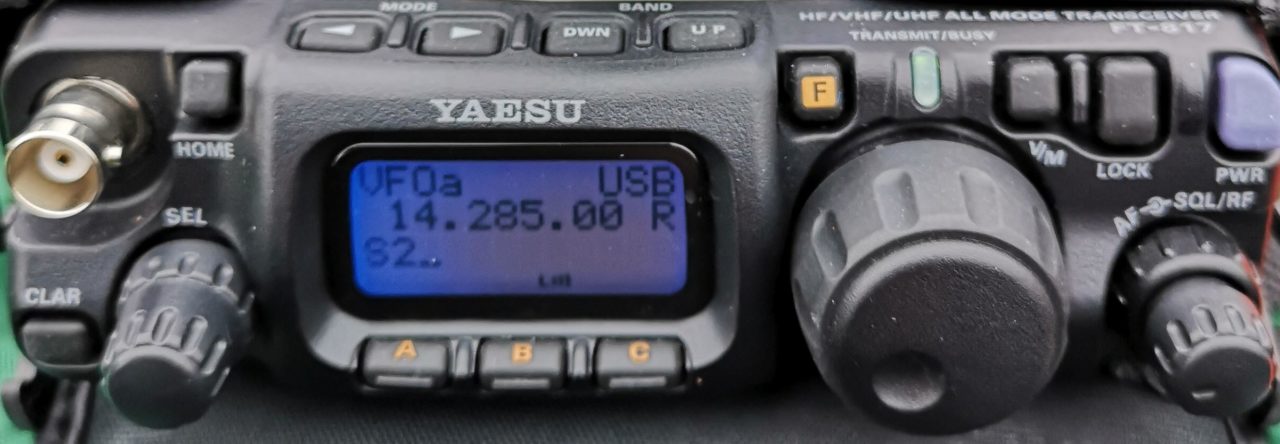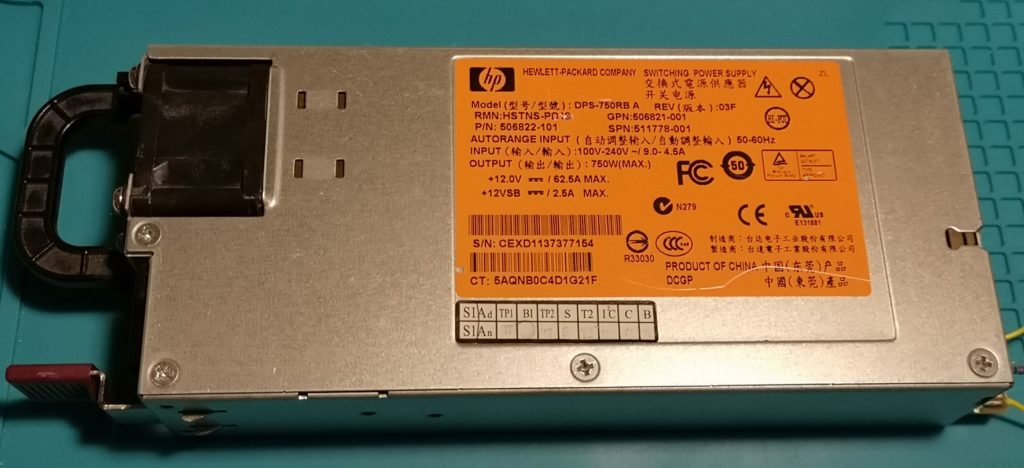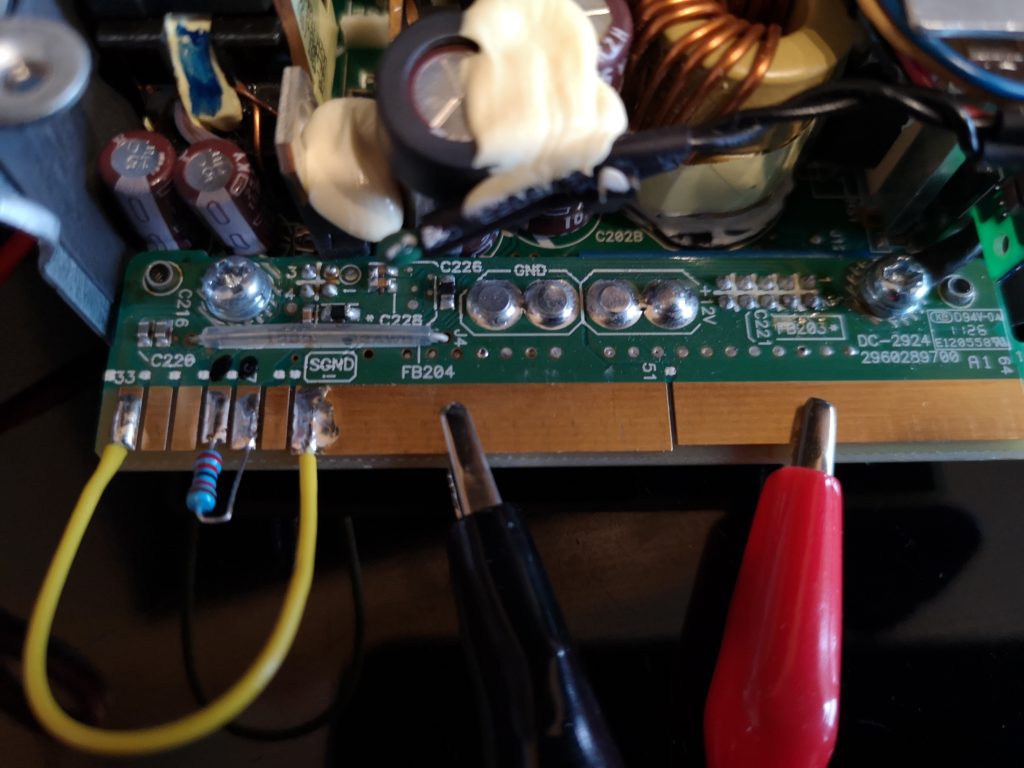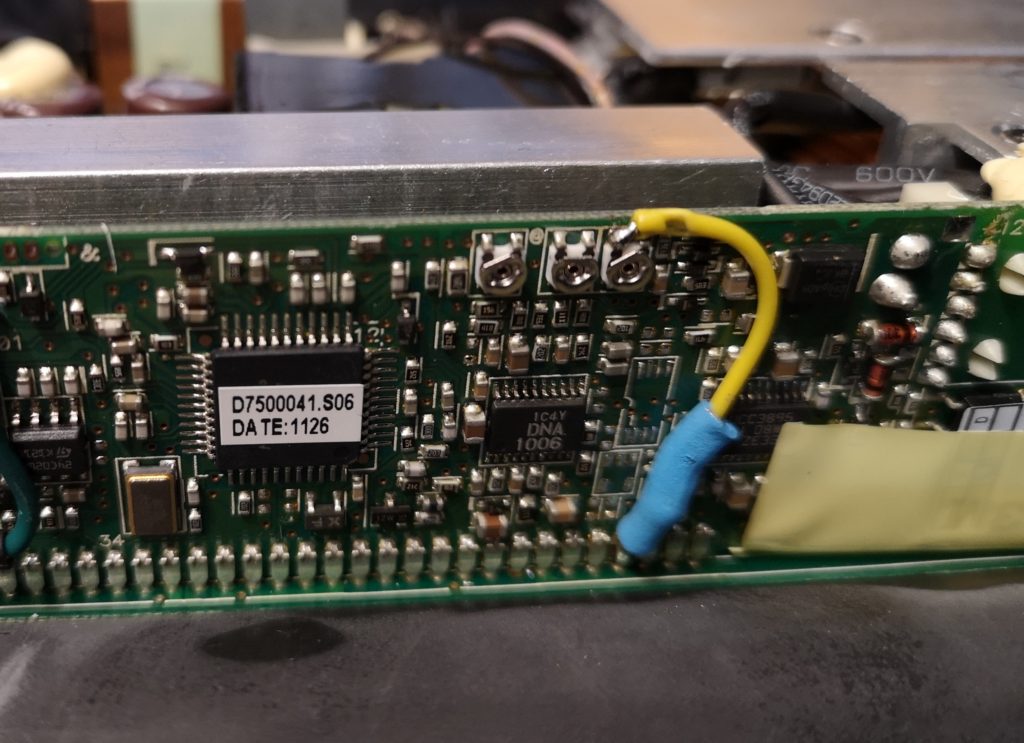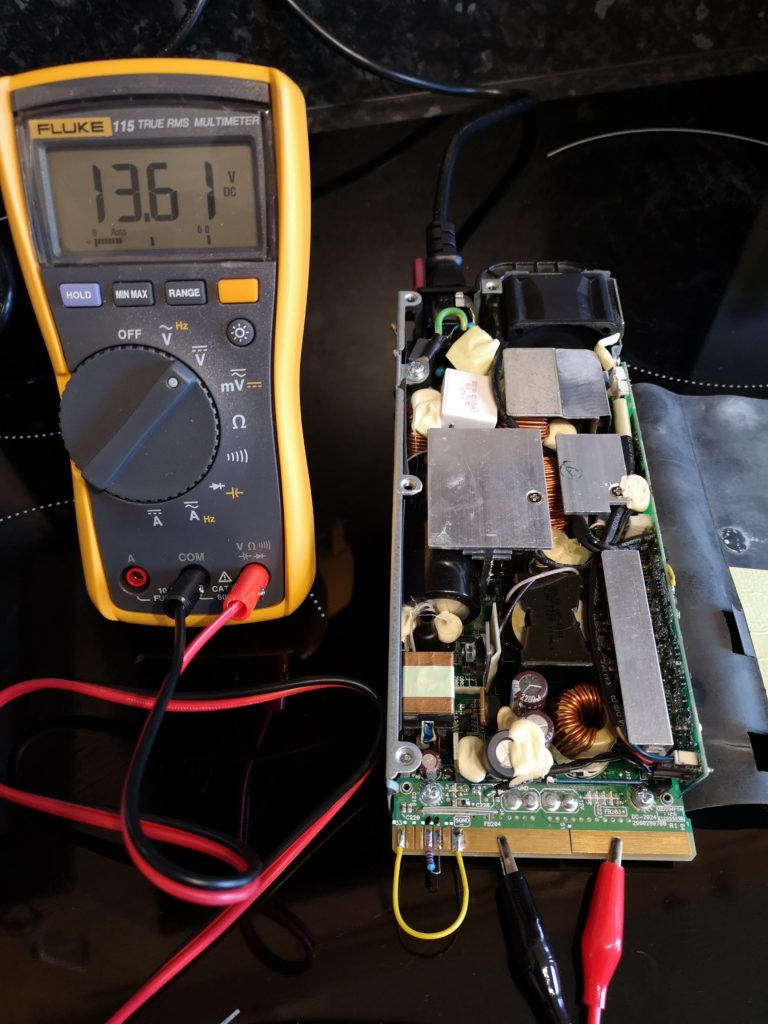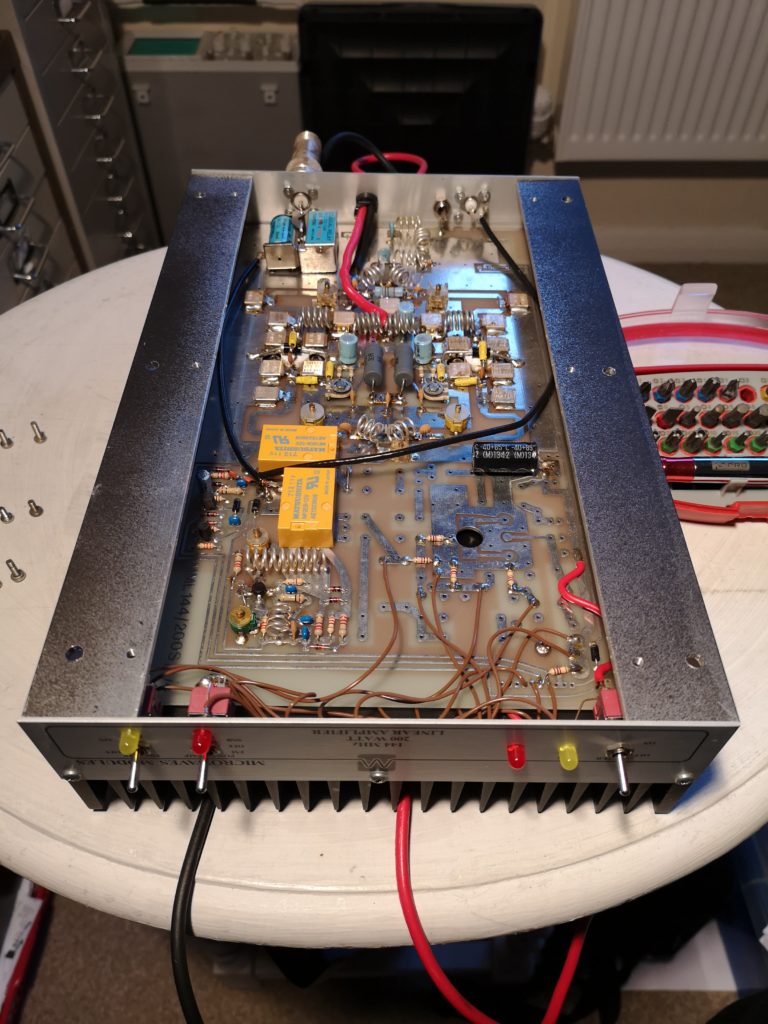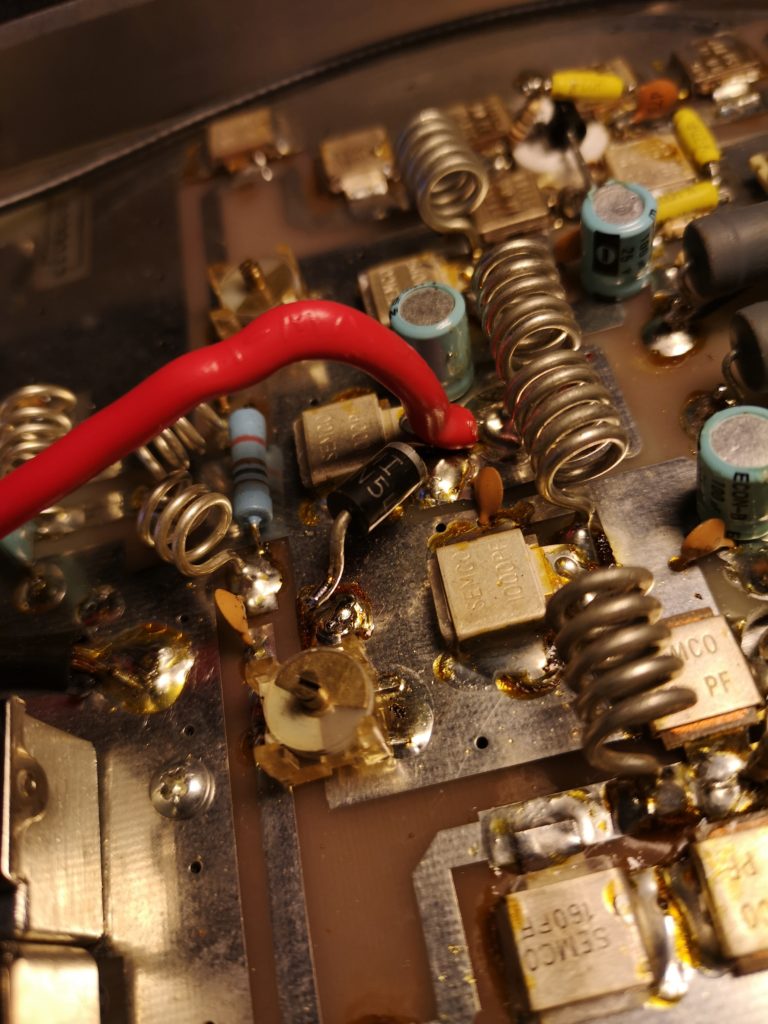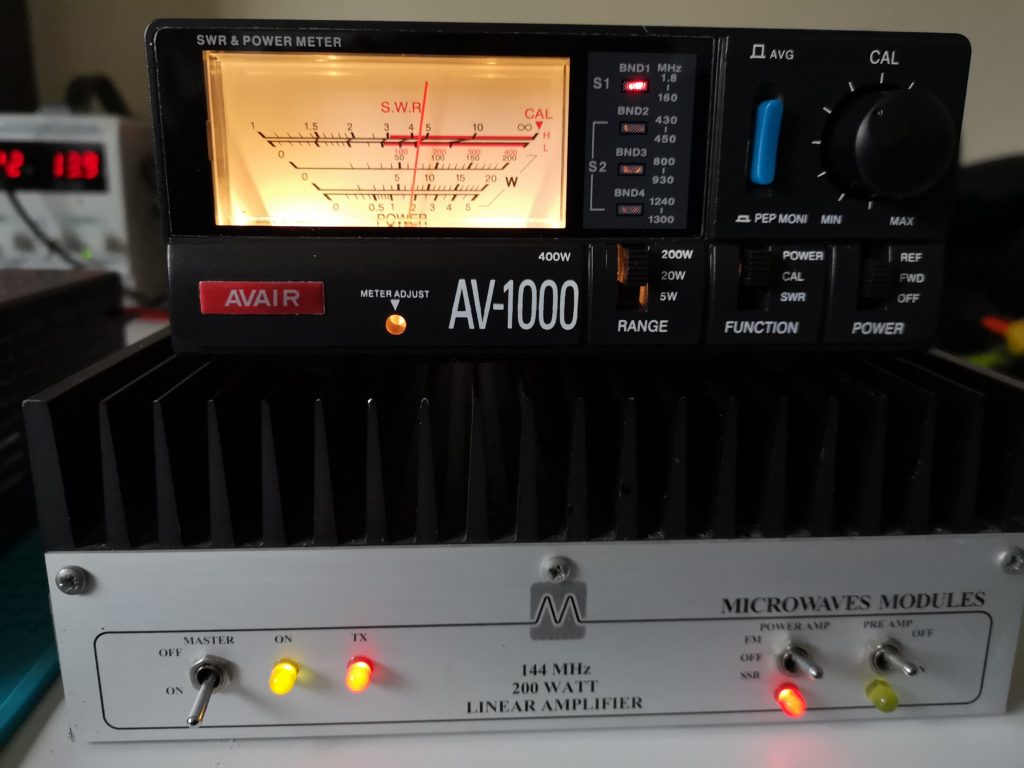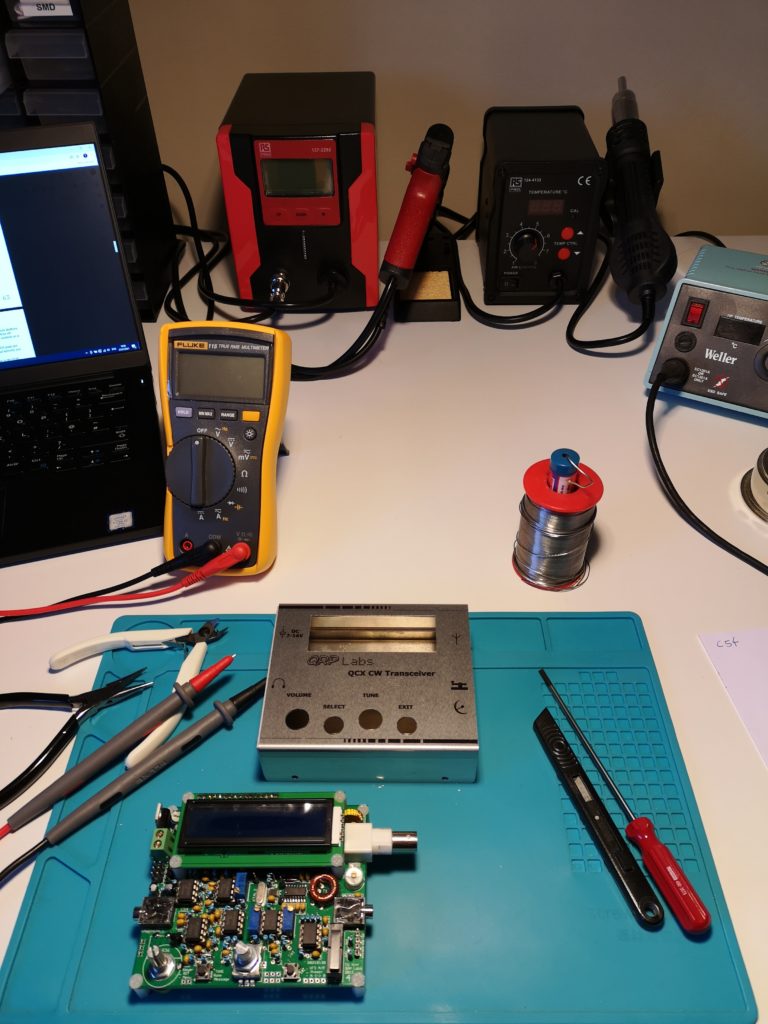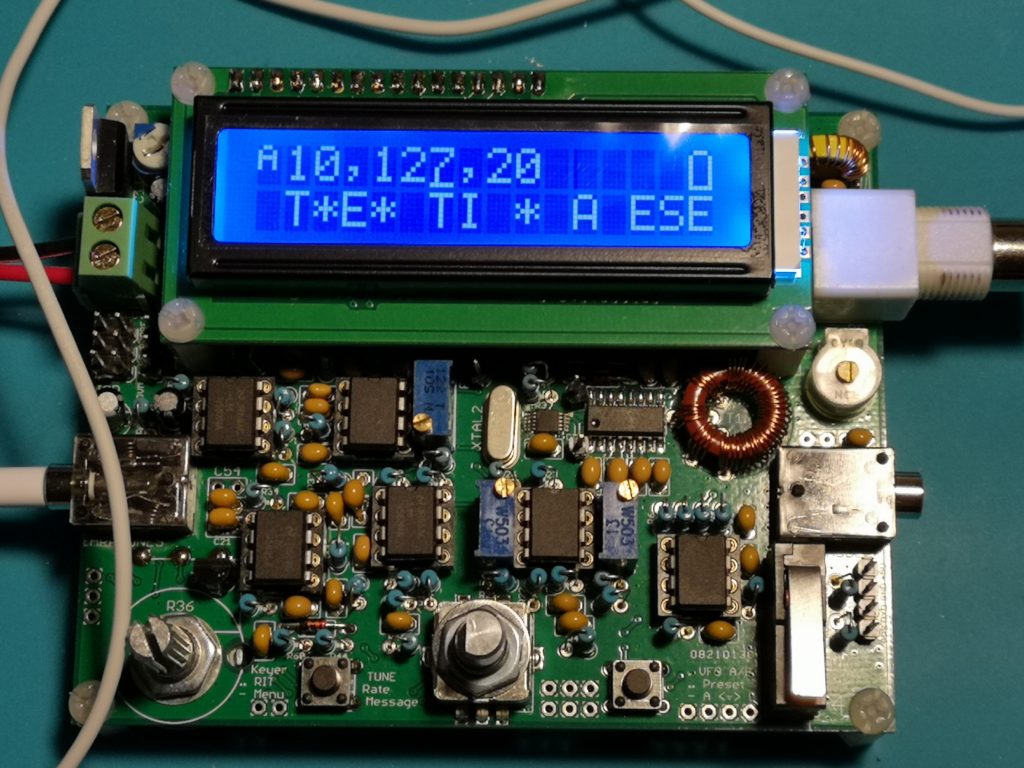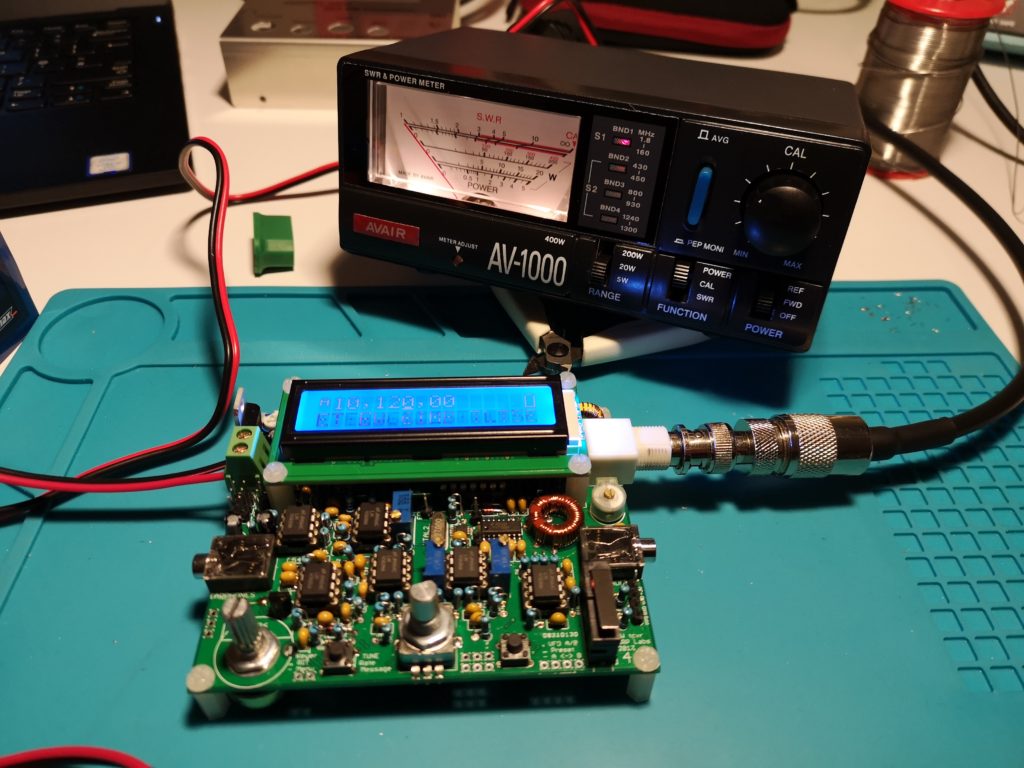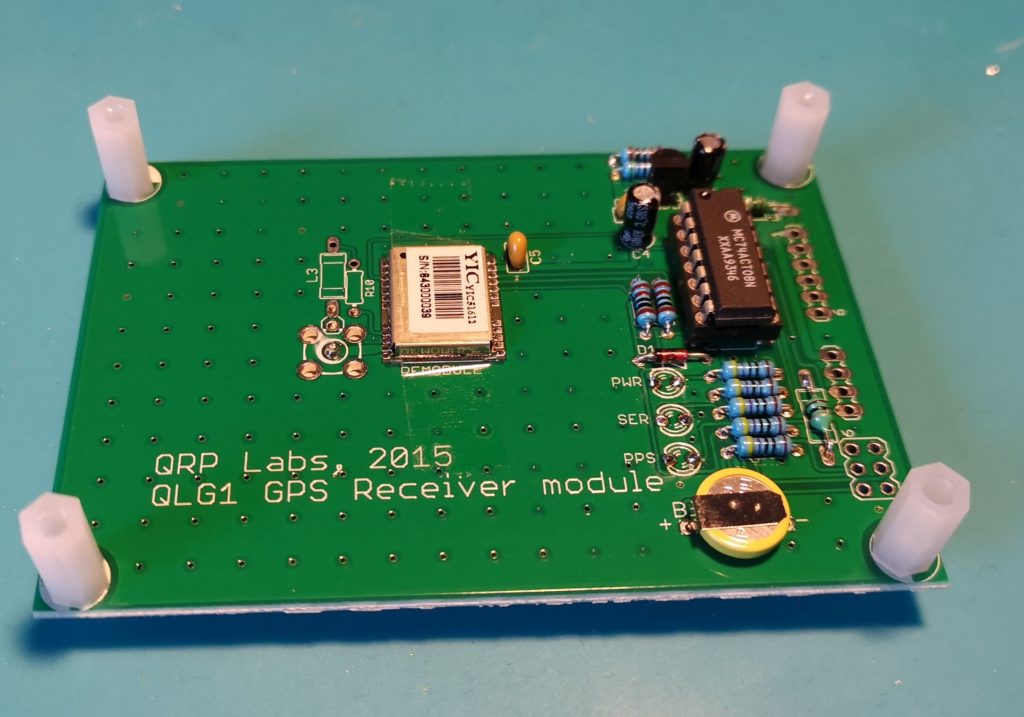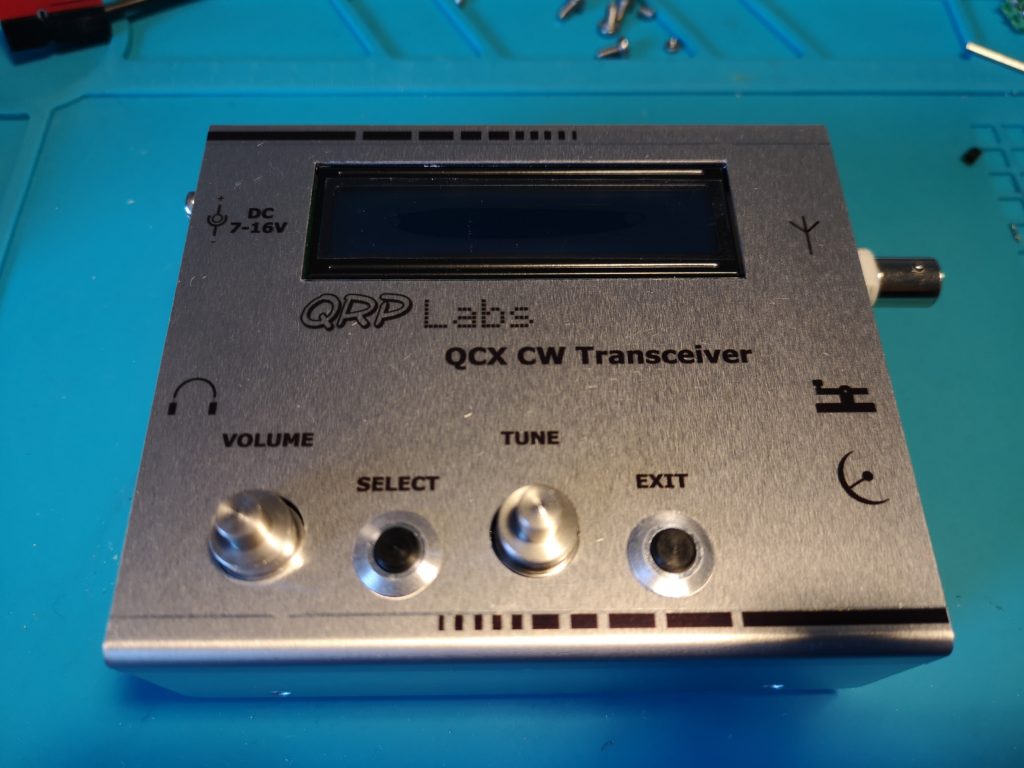
Another step nearer to using the latest addition in anger.
The PCB is now living in the custom built Bamotech case, is calibrated and optimised to give higher power output than the the original 0.7w.
Calibration is easy, follow the instructions to optimise the rx and tx.
If you have the Qrp Labs GPS unit, make a 4 way lead to connect the GPS to the QRX PCB. This is not clear in the instructions.
The GPS is powered from the 4 way connector on the QCX pcb – no external power needed for the GPS – make sure your pin to pin connections are correct by referring to the manuals and schematics for both units.
By selecting the correct menu function, the GPS will set the frequency offsets etc in less than 30 seconds and you are ready for the tx optimisation.
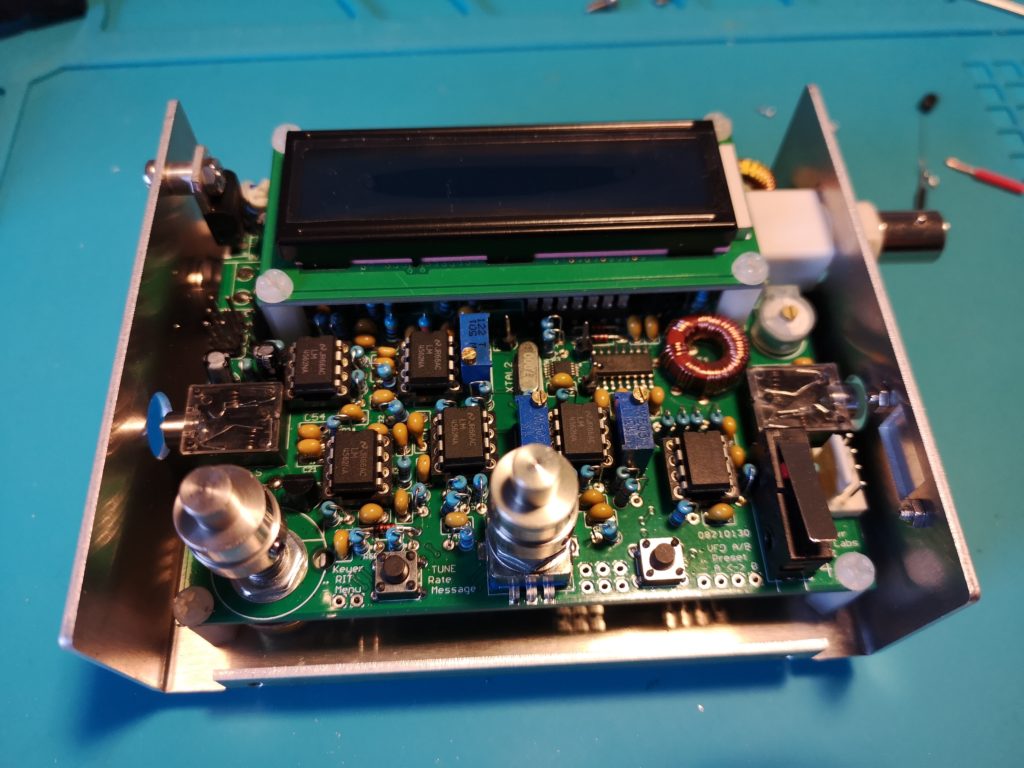
Hans produced a comprehensive video showing the procedure for optimising the BPF and how to increase the TX power.
Video here
Following the guidance on the video, 2 turns were taken off the torroid and the others either pinched or expanded as described. Power output increased from 0.7w to 3.8w at 12v.
At 13v the power was just over 5w.
Text book tuning!
The last thing on the list is to source a 5.5mm/2.1mm power connector to marry up with the Bamotech supplied power socket – frustrating that they dont supply the power plug with the case kit.
RS components in the UK have the plugs, but with £4.95 postage on an 88p plug, it is a bit steep.
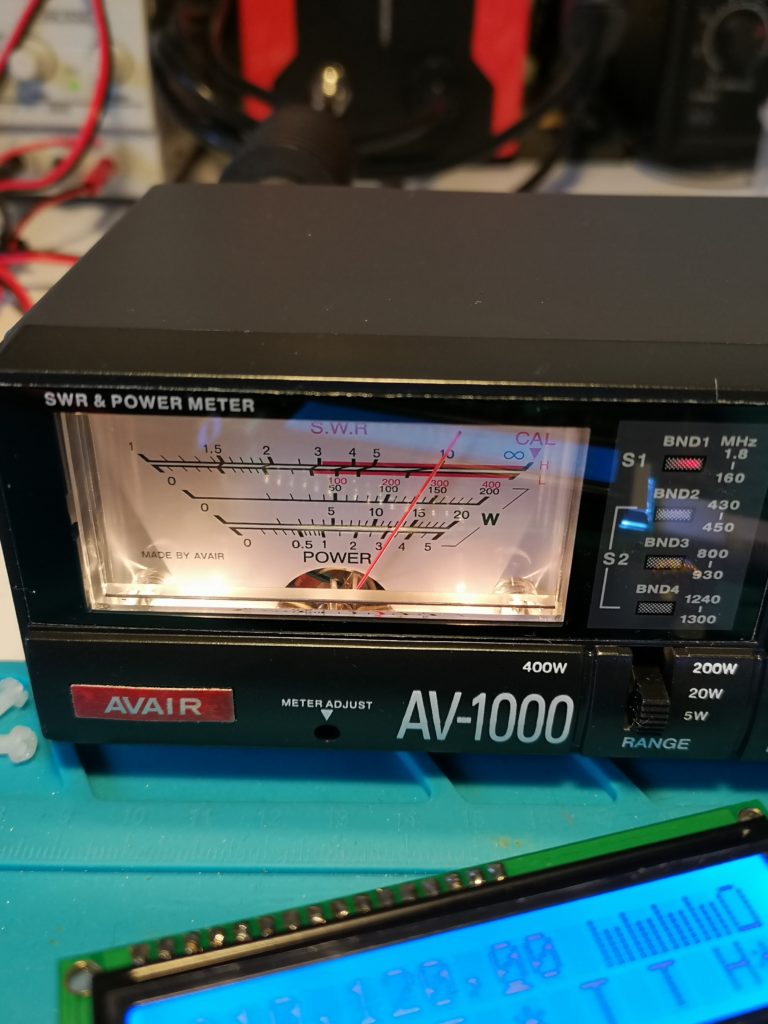
Very happy with this radio, a lot of thought has gone into the design and the user manuals, and using a home built radio is very satisfying.
73
Tim
